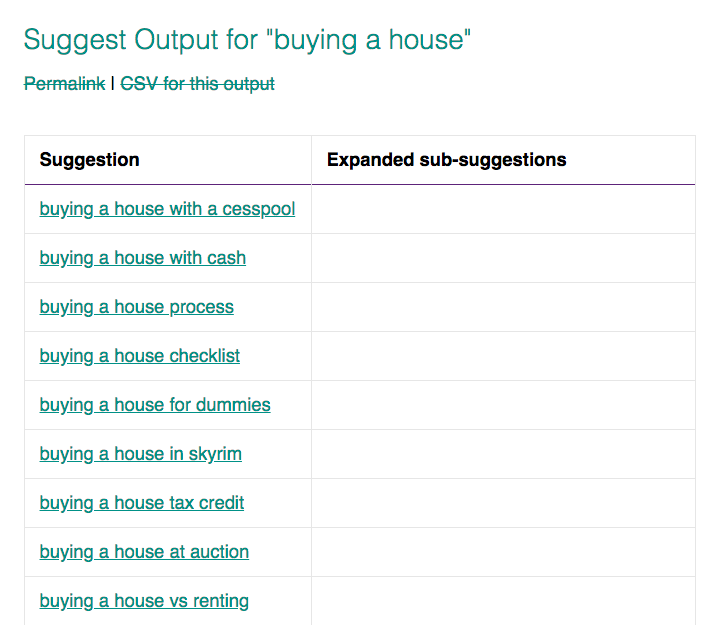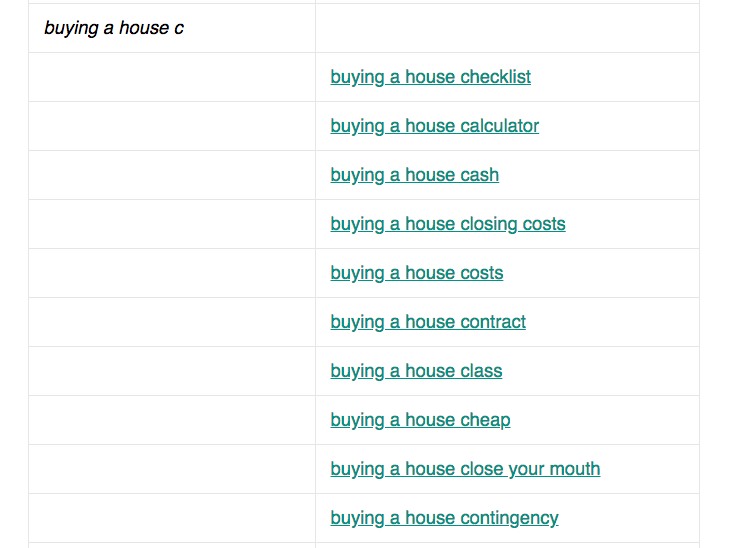Case study: Appealing content for a real estate site

In our Ask Yoast case studies, we gave SEO advice to readers who signed up for this series. This time, however, we’ve had a look at the website of Ryan Hoffman: leverageny.com. He didn’t sign up for the case study, but commented on our Ultimate guide to Content SEO. He told us nobody in his target audience reads content. So we became curious if we could give Ryan tips to optimize his website without focusing on the text only. Our main conclusion is: Ryan’s website would benefit from a more holistic SEO strategy. Read on to find out how!
What keywords does your target audience use?
First of all, setting up an SEO strategy and creating content should always start with keyword research. Writing about keywords nobody is searching for doesn’t make sense, as you probably understand. Ryan already mentioned that people searching for a keyword such as ‘How to sell a house’ probably aren’t looking for great content. Those people end up calling an agent, sell their house and that’s it.
So what type of content could attract people interested in real estate? Where would you be interested in if you were looking for a new house? List everything that pops up your mind, and you’ll probably get great new content ideas. For example, think of ‘Tips for buying a house’, ‘Should I buy or rent a house?’, ‘What additional costs can I expect when buying a house?’.
Make your keywords specific
You might notice that the key phrases I’ve added to the paragraph before are quite long. Such specific key phrases are also called long tail keywords. Long tail keywords are more specific than main keywords, but they can be of equal value to your website. Of course, fewer people will search for such specific keywords, but if they do, they’re more likely to convert. People searching for long tail keywords usually know better what they’re looking for on the internet. This means it’s easier to meet their needs by writing specific content about long tail keywords.
We recommend checking the content of existing articles to see if you can determine a specific long tail keyword you want to rank for with that article. If you find one, try optimizing that article for it to increase the value of the traffic to that article.
Make use of tools
In addition to listing the subjects that pop up in your mind, you can use tools to find new keywords. There are lots of tools that can be helpful by finding relevant keywords for your business. This article about keyword research tools will give you some examples of tools we use at Yoast. Our Yoast Suggest tool shows popular, relevant keywords as well as keyword ideas for every letter of the alphabet. Just take a look at these images:


Help visitors reach the main goal of your site
When visitors click on your website in the search engines, most of them will probably land on a specific article. It’s important to keep those visitors on your website and to easily reach the main goal of your website.
When we look at your site, however, it’s not completely clear to us what the main goal of leverageny.com is. Do you just want visitors to read your content or do you want them to search for an actual house on your website? Looking at the website, we think the option to search for a house is quite hard to find. If this isn’t your main goal, this is no problem. Think about what you want your visitors to do on your website and make sure you help them navigate to that goal with the right links on the right spots.
Positive user signals
In the introduction of this post, we already mentioned that we recommend following a holistic SEO strategy. This means you should strive to make every single aspect of your website great. For example, adding new content regularly is something search engines like. Keeping visitors on your website though, is probably just as important.
Google uses so-called user signals to determine if the website is a result that matches the search intent or search query of the visitor. The time visitors stay on your website can be an indicator of that match. Visitors staying for a long time on your website send a positive user signal, improving your site’s SEO indirectly and possibly leading to higher rankings.
How to keep visitors on your website
To increase your visitors’ time on site, it’s important to give them the opportunity to easily navigate to relevant, other posts on your website. Make sure you link to relevant content at the bottom of each post but also from within the texts of posts by using internal links. By adding more internal links, you can make your most important posts stronger and you’ll give your visitors the opportunity to easily navigate to other relevant posts.
Looking at your posts, we think there might be too much distraction because of all the different elements in the sidebar and below the posts. Try to add more focus to the part you want your visitors to click on after reading a post.
In addition to that, you can create more specific categories. Checking the XML Sitemap, we noticed that you’ve only added very generic categories:
 Categorizing posts, you can make a strong ‘bulk’ of content about the same or nearly the same subject. Adding more relevant posts to a category will make it stronger. Google will see that the content within that category is all related and therefore, valuable for potential visitors. For example, for the category ‘Home buying’ you could add subcategories such as ‘Home buying: apartments’ and ‘Home buying: cities’. Another option is adding tags such as ‘Apartments’ and ‘Beach houses’ to create specific overviews of related posts on your site.
Categorizing posts, you can make a strong ‘bulk’ of content about the same or nearly the same subject. Adding more relevant posts to a category will make it stronger. Google will see that the content within that category is all related and therefore, valuable for potential visitors. For example, for the category ‘Home buying’ you could add subcategories such as ‘Home buying: apartments’ and ‘Home buying: cities’. Another option is adding tags such as ‘Apartments’ and ‘Beach houses’ to create specific overviews of related posts on your site.
Categories and tags are beneficial for your site structure and for Google – to understand what content you have on your site. Moreover it helps to keep visitors on your site. When users see a link to related categories or tags they’ll likely navigate to those sections to read more relevant content. But now, the posts within the category ‘Home buying’ are probably too different to find specific posts a visitor would be interested in.
Optimizing for local SEO
Since the business of Ryan Hoffman is focused on particular areas of New York, it’s important to optimize for local SEO as well. There are probably lots of people in the neighborhood looking for a house in one of those areas. When you optimize for local SEO your website will be more visible in the search results of people nearby.
We noticed that you’ve already added separate pages for different areas which is great! Doing this, the search engines understand what areas your business focuses on. To give those location pages even more value, we recommend adding introductory content with information about the specific area to increase your rankings in the local search results even more.
In addition to that, we think that you didn’t create a Google My Business account yet. Adding your business details to Google My Business can also be very valuable for local SEO. We definitely recommend setting this up!
The power of social media
Lastly, we would like to mention that you shouldn’t underestimate the power of social media nowadays. The amount of people having social media accounts is still increasing, so your target audience probably uses social media every day.
We think social media should definitely be part of a holistic SEO strategy. Google and other search engines can’t ignore the importance of social media anymore and this means that you can boost your site’s SEO by the right use of social media. Since you write lots of great posts, we think it would be great to promote them on social media. Give your posts attractive titles and perhaps promote them – this isn’t too expensive on for example Facebook – you’ll lead people from social media to your website. And when they are in, you should keep them in and make them convert!
To sum it up
In short, it’s important to do proper keyword research to really know what your target audience would like to read online. Adding more long tail keywords will probably make it a bit easier to rank. Besides using the right keywords, it’s important to make sure visitors can easily navigate to relevant content on the website. Make use of internal links and remove all the clutter. The main goal of your website should be clear and with internal links you can lead your visitors to that goal. Lastly, optimize for local SEO and make sure you benefit from the power of social media to improve your SEO and to get more traffic to your site.
Ryan’s response
When we showed the draft of this post to Ryan, we got a very nice and detailed response. Thanks and good luck Ryan!
“Great points on long tail research. With a lot of local competition, I think I could benefit from targeting more in depth keywords in an effort to drive specific traffic.
I have been a bit frustrated about how to keep my bounce rate down and keep visitors on the page. I want them to search homes for sale, but with most of my traffic coming from mobile, I have had a hard time presenting the home search ability to visitors. I want them to read articles to learn about the market, but also search. I need to make this clearer when they land.
I do have a lack of links inside articles. Maybe assuming that visitors will read to the end and navigate elsewhere is naive of me, but I also wanted them to see that I have houses for sale on the site they can click on. So far through, it hasn’t been working.
Niche specific categories and tags has definitely been something I have on my list. I need to drill down into these broad categories to get more specific for my visitors and for Google.
Another great point by Yoast here is that I need to add content to the different geographic pages of my home search. Right now these pages just offer a list of active homes for sale. But creating video or other relevant content before the list of homes in presented is something I should definitely do.
I have been working on social media, and of course my Google my business page. Sharing posts on Facebook has seen an increase of traffic, but also, my content is not specific enough to target an audience. Right now my content is for “everyone” and every area in my surrounding location. I think I would benefit from a more niches based approach.
I thank Yoast for this great case study regarding my site. Truth be told, I have studied SEO, mostly via Yoast content for quite some time, and have seen improvements in my SEO when following their best practices. I have been enlightened with this case study and learned a lot on new things to work on, but also feel like I am on the right path since Yoast mentioned a few ideas that I already had on my list, mainly because I learned them from Yoast! Thanks again for the great piece.”
Read more: How to optimize your real estate site »


Discussion (3)